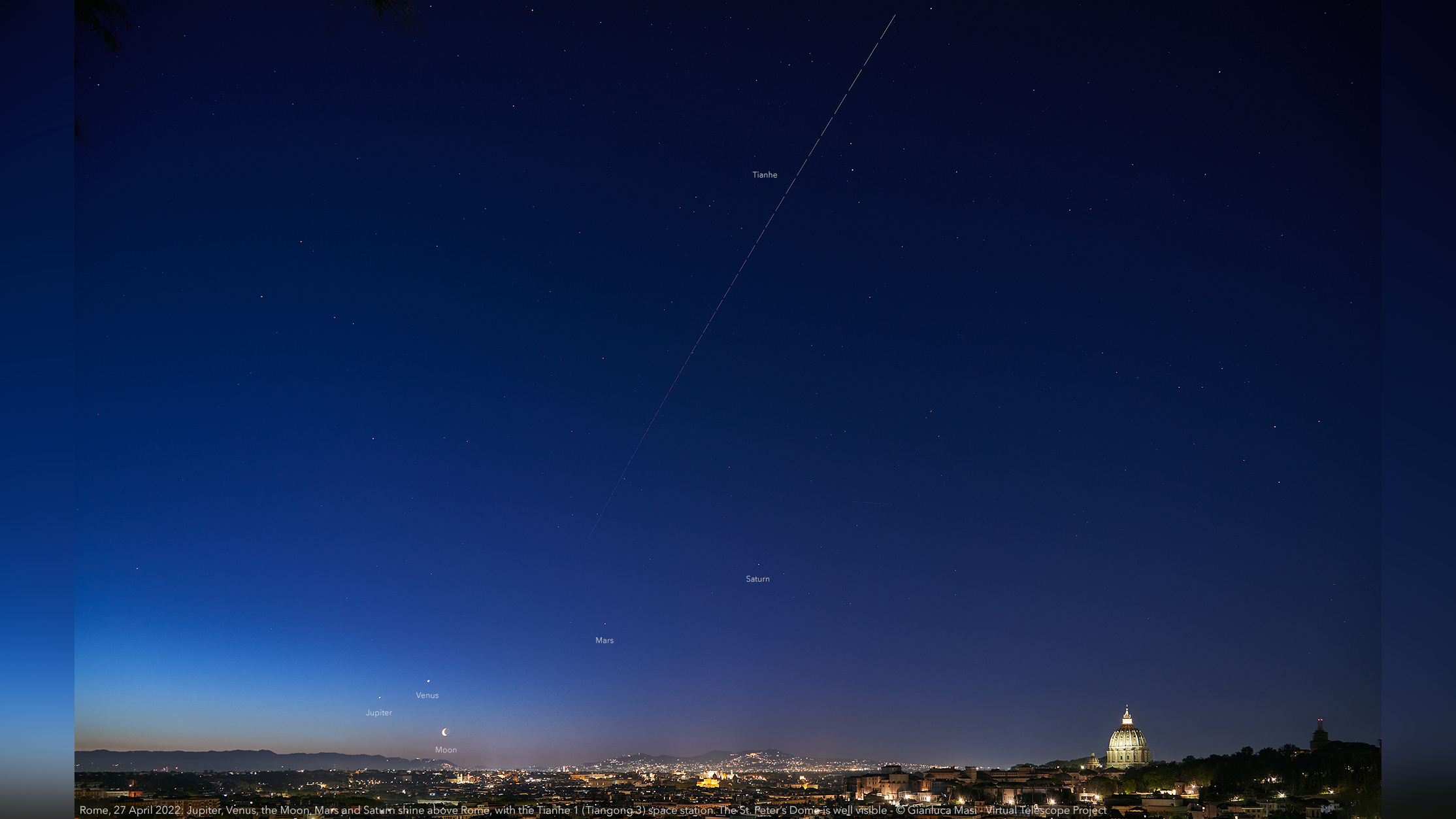5 planets are lining up in the night sky this month
The alignment has been setting up for months, and June is the time to catch the view.

A planetary alignment that has been developing for months is finally here.
Depending on local viewing conditions, Mercury may now be visible alongside Venus, Saturn, Mars and Jupiter in a march across the predawn sky, visible from the Northern Hemisphere. It's the first alignment of the five visible planets in our solar system since 2020.
"This is early morning, so you do have to set the alarm in order to do it, but it's just a fun time to go see planets in the sky," Michelle Nichols, the director of public observing at Chicago's Adler Planetarium, told Live Science.
How to see the five-planet alignment
The alignment will be spread out across the eastern horizon, as seen from the Northern Hemisphere. The best time to view the alignment is about 45 minutes before sunrise, local time, Nichols said. The clock time for sunrise will vary day to day and within time zones, so it's best to set the alarm based on local conditions.
Whether Mercury has joined the alignment yet also depends on local conditions. If you can find a spot with a clear view of a flat eastern horizon, the planet should be visible as of about June 10, Nichols said. If hills, mountains or buildings block the eastern view, skywatchers should hang tight for another week or two; Mercury will continue to rise higher above the horizon in the predawn hours each day. Late June is the best time to look, as Mercury will dip below the horizon again in early July.
The planets will be spread across a wide stretch of sky from the east to the south. When trying to differentiate planets from stars, look for steady light. Generally, Nichols said, stars twinkle, while planets don't.
"Mercury will be farthest to the east and lower, Venus will be really bright and up above it and to the right, Mars will be orange to the southeast, Jupiter will be to the upper right and then Saturn will be to Jupiter's upper right a little bit toward the south," Nichols said.
Sign up for the Live Science daily newsletter now
Get the world’s most fascinating discoveries delivered straight to your inbox.
On June 27, the crescent moon will provide a useful signpost for Mercury, which will be just below and to the right of the crescent. Mercury will also hover near an orange-tinted star called Aldebaran, which makes up the eye of the bull in the constellation Taurus.
Mercury, Venus, Saturn, Mars, and Jupiter will all be bright enough to see with the naked eye. Uranus is also in the line of planets, but will require dark skies and a pair of binoculars to spot. Neptune will be present in the morning sky in the constellation Aquarius during this time, but will not be visible except with a telescope.
What is a planetary alignment?
The visible planets are not actually lined up in a row in space; a viewer looking at the solar system from above would see a random smattering of planets that just all happened to be to one side of the sun. From Earth, though, a lack of depth perception makes it appear that all of the planets are next to one another.
Mercury circles the sun every 88 Earth days, Venus every 225 days, Mars every 687 days, Jupiter every 12 years, and Saturn every 29 years, so these alignments occur on an irregular schedule. The last time the five visible planets were aligned was in 2020, preceded by 2016 and 2005.
The timing of the alignment is limited by Mercury, which doesn't spend very long in one area of the sky, given its short orbit around the sun, Nichols said.
"It's just a great time to go out and see the planets all at once," Nichols said. "We don't always get this opportunity."
Originally published on Live Science

Stephanie Pappas is a contributing writer for Live Science, covering topics ranging from geoscience to archaeology to the human brain and behavior. She was previously a senior writer for Live Science but is now a freelancer based in Denver, Colorado, and regularly contributes to Scientific American and The Monitor, the monthly magazine of the American Psychological Association. Stephanie received a bachelor's degree in psychology from the University of South Carolina and a graduate certificate in science communication from the University of California, Santa Cruz.










